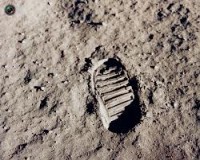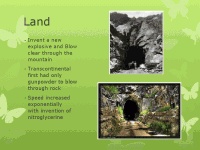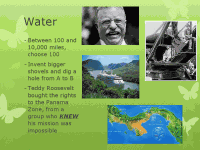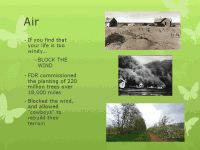Modernity as Creativity: How creativity can be measured by the size of a step.
This morning, the FurtherEd staff was asked to consider the definition of "Creativity," a concept that the company prides itself on and has largely driven the company's success.
Often times, creativity is thought of narrowly, as displays of masterful, artful, or intellectual manipulation of processes as intended to assist in the overcoming of obstacles.
But sometimes, as we learned this morning, creativity merely means looking at a big gap, and finding the courage and wherewithal to jump it.
Three fine examples of "jumping big gaps" as applications of creativity, as we discussed, are:
Building the transcontinental railroad through the Sierra Nevada mountains, when such a passing seemed theoretically impossibly and practically improbable. At the time of its construction, the government would only compensate the railroad's builders if the track was laid at a small grade (allowing for trains to ascend via steam power). This stipulation required going through the mountain - a seemingly insurmountable hurdle.
BUT... stronger and creative minds prevailed. Armed with nothing but black powder (the powder used in civil war gunfire) the workers began chipping away, stretching fractions of an inch a day! Determined to increase their speed and break through the mountain walls, the workers turned to a new invention, nitroglycerine, and picked up the speed.
As a result of the railroad, and the subsequent growth of the American West, Teddy Roosevelt (a lover of all things Navy) realized that the new territory required defense! The problem? With all the nation's shipyards located on the Atlantic seaboard, and the path to the pacific requiring circling half the globe, the U.S. would be unable to support two war efforts, which to Teddy (and prior Presidents) was a necessity.
Teddy faced his own "Sierra Nevadas" in the Panamanian Isthmus. What did he do? Armed with only small shovels, he started digging, eventually engineering bigger shovels, and creating the pathway that now supports naval, freight, and tourism transportation.
With the West now developed and protected, FDR's period of presidency was defined by the growth of the inner-regions. Due to previous, destructive farming practices, the land in between the coasts had been decimated and left nearly unlivable. The term "Dustbowl" is a literal description of the arid, wind-swept region between Canada and Texas that simply could NOT be developed.
Faced with wind... FDR attempted to block the wind. By constructing shelterbelts, FDR managed to literally block the wind from certain farming areas, and stimulate the redevelopment of the region.
So... how does this reflect the FurtherEd culture? Here at FurtherEd, our creative solutions are akin to those of Lincoln, Teddy, and Franklin - we see gaps, and we jump.
No real estate program in a giant, established real estate market? BUILD IT
No presence in the interior U.S. where other companies are thriving? GO THERE
No content for newly admitted attorneys, one of the greatest in size groups of attorneys? CONSTRUCT IT.
For FurtherEd, staying at the forefront requires being modern; being modern requires creativity; creativity, for us, requires blasting tunnels, building shelterbelts and digging canals until we reach the next step, at which point we use those efforts to conquer whatever comes after.





 Facebook
Facebook
.png) X (Twitter)
X (Twitter)
 LinkedIn
LinkedIn
